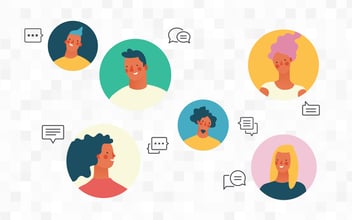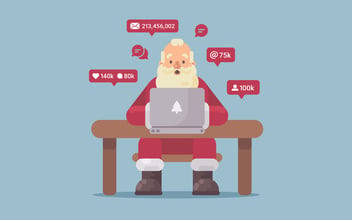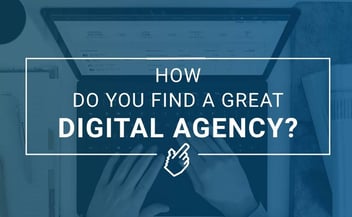What if I told you that understanding the journey your customer takes from the moment they realize they have a problem or an opportunity, to the time they realize the solution, can be a game changer for your company. True, this is hardly a phenomena, but it’s incredibly important to understanding today’s buyer - especially in the B2B realm.
The Inbound Methodology
It’s no secret that inbound methodology is a great philosophy to follow when creating content for your business. But what exactly is it?

These four steps are crucial to understanding how to be where your best buyers (buyer personas) are when they’re looking for answers. These four stages of the inbound methodology cover how to educate customers at each stage of the buyer’s journey.
Unfortunately, not everyone who comes to your website will be ready to pick up the phone and give you a call for a quote or to purchase something. Understanding this is key, because you want people to stay on your website, not leave because they’re not ready to buy. How do you do that? Well, we’re glad you asked.
Make ‘em Notice You
The awareness stage is the first stage of the buyer’s journey. When your persona is in the awareness stage, they are just poking around on the internet without any real motive. They may be trying to figure something out, identify a potential problem, or they may just be doing their morning reading. (Defining your buyer personas or ideal customer profiles as a pre-cursor to mapping out buyer's journey stages is a pro tip!).
The best way to reach people in this stage is to give them quick wins. You can do this through educational content. The goal is to create content they deem so valuable that they’ll remember you as their go-to resource for your specific industry. Here’s how it looks at a high level:
I’m waiting at the dentist office and poking around facebook. I stumble upon a post from a general contractor about 10 tips for painting multiple rooms this spring. I read the post. At the end of the post is a call-to-action with a checklist for kitchen renovation. I read the checklist, go home and, all of a sudden, I’m noticing more and more things wrong with my kitchen. So, I go back to the checklist and start researching more about remodeling my kitchen.
Consideration: More than consideration
This is where things get fun. Once a customer reaches the consideration stage they’re fair game. How do you know when a customer is in the consideration stage? It’s based on the content they’re reading and downloading on your site. Let’s revisit our friend who is considering remodeling his kitchen.
After reading a blog post about painting while in the awareness stage, he moved himself into the consideration stage by downloading the checklist for remodeling his kitchen. Based on downloading the checklist, he is enrolled in a workflow containing a series of emails to better qualify where he’s at in the buyer’s journey.
Once he (hopefully) replies to the email, he is taken out of the workflow, and you can then have a direct conversation with your potential customer. This is called the decision stage.
Decisions, decisions, decisions
The decision stage is when your persona has identified his or her problem or opportunity and is now deciding on a vendor or a partner to move forward with.
If you’ve done a great job of educating them along their journey, as opposed to scaring them off with aggressive sales tactics, you should be in a great spot.
Delighted, Referring, Repeat Customers
The final stage of the buyer’s journey is known as the delight stage. This is a critical stage because this is the point where you make sure the customers you’ve acquired are happy. It’s easy to sell something and move right onto the next prospect, but through the same marketing automation that helped you gain the customer, you can also use it to follow-up with the customer.
By setting up an email workflow for current customers, you won’t have to worry about remembering to follow-up. More importantly, this gives you an opportunity to stay in front of current customers. The end goal is to do such a great job for your customers that they wouldn’t hesitate to give you referrals.
A.B.H.
A.B.H. stands for Always. Be. Helping. If you’ve spent any time selling, you’ve probably heard the term “Always be closing.” However, inbound sales is all about helping. If you’re constantly helping and educating your prospects, they’re going to remember you when they’re ready.
The inbound methodology is a process, and like the Philadelphia 76ers have shown, trusting the process will eventually payoff.
If you’d like to learn more about the inbound methodology feel free to schedule a 30-minute call with me. At ProFromGo, we eat our own dog food, so I’ll be happy to help in any way I can. :)




